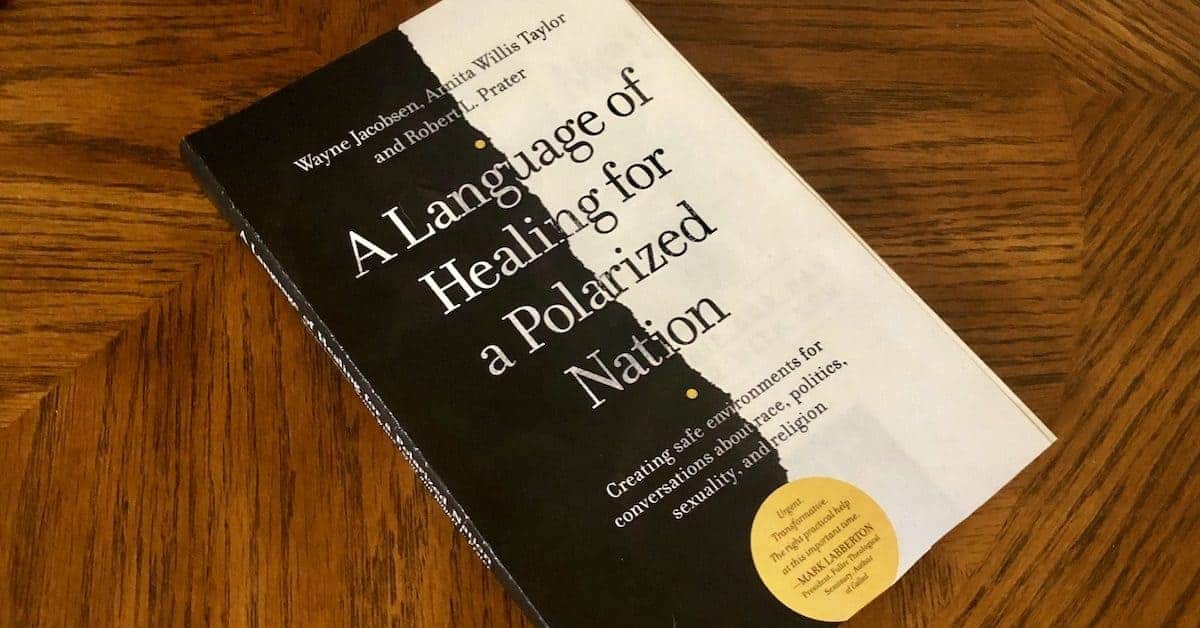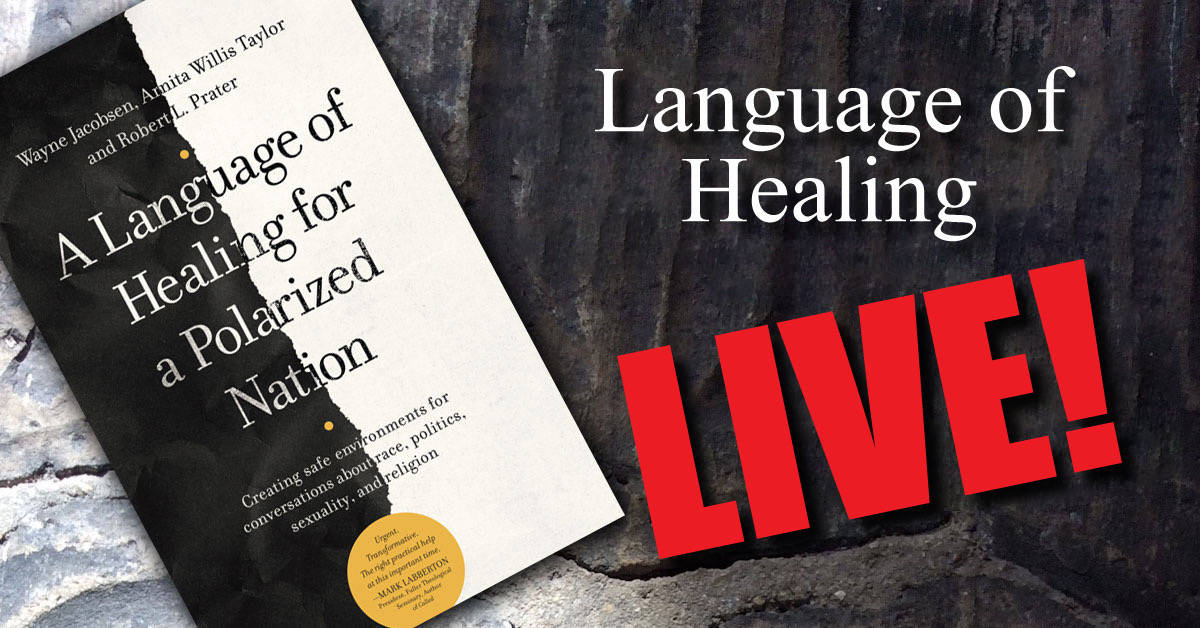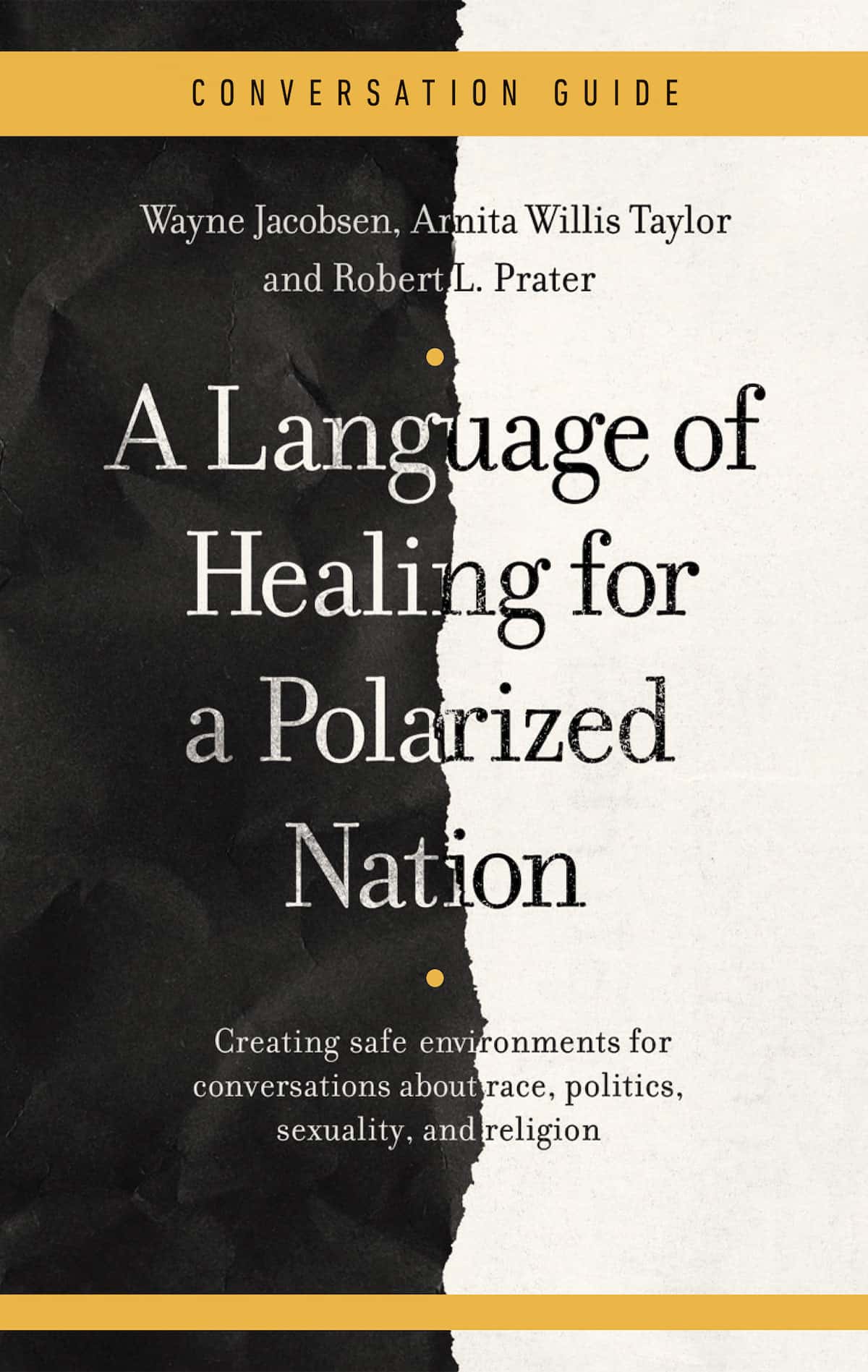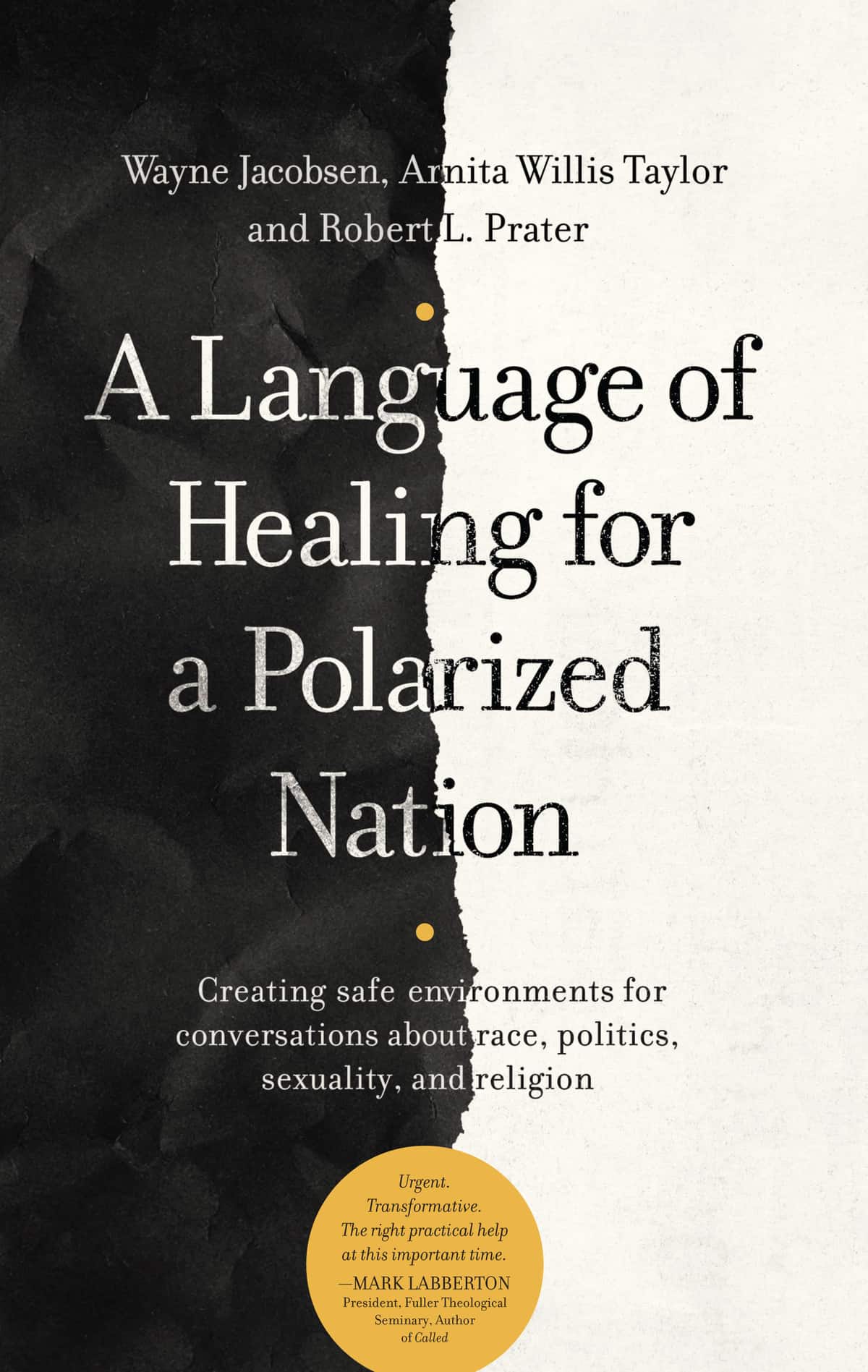Sara and I are taking a break for a week so, please go easy on me email-wise while we are gone. This is Sara time, and perhaps the lull before the storm with the new book coming out and a bit of travel ahead.
Amazing news today! We just found out today that Amazon placed an order for 3,000 copies of A Language of Healing. That’s astounding for this little book from a new publishing company! Obviously, there is a lot of interest for this title and we’re excited that it may give people a way to negotiate the growing tension in our culture. I’ve been asked by some of our international readers whether this is for the United States alone. It’s not. People in any polarized nation will find the strategies in it very useful.
The publishing date for the book is November 19, but we are having two weekends around that to celebrate the launch and where we’ll have books available. You can join us in Dallas for the first book launch on November 17, It will give you a chance to meet all the authors and talk about our passion to change the conversation one person at a time. Details are on the ALanguageOfHealing website. Also, the day before (Saturday, November 16) we will be hosting our first seminar about the content of the book. We’ll be meeting from 10:00 am to 4:00 pm. The cost is $50.00 for the training, which will include an advance PDF copy of the book and a printed copy at the seminar. We only have room for 40, so sign up quick at the website or by emailing me.
The following weekend the team will be together again for a Book Launch in Southern California at Life Pacific University. Details can be found at A Language of Healing website or you can email me to register. I hope some of you can come join us and help us begin a different sort of conversation in the world.
I can’t wait for you to meet my coauthors, Bob Prater and Arnita Taylor. The connections between us have not only been orchestrated by God, but the synergy between our thinking has been transformative to each of us. This has been such an amazing journey.
Here’s a sneak peek at the introduction to this book and how it came to be.
INTRODUCTION
Have you ever found yourself in an awkward moment with someone different from you?
Maybe you both heard a joke at the same time, but your reactions were wildly different. Have you ever made a comment that you found out later was offensive to others, when you didn’t mean it to be? Are you afraid to initiate a conversation with someone different from you for fear you’ll say the wrong thing or be misinterpreted?
If you answered yes to any of these questions, you are in good company. Our social fabric is unraveling as anger and vitriol rule the national dialogue. Offenses are easily taken… and too often intended. We are losing our ability to communicate gracefully with people of different cultures, interest groups, or opinions.
Political parties exploit it, the media sells it, and Russian troll farms exacerbate it. And they will continue to as long as the electorate falls for it.
Aren’t you done with all of that?
Our differences cannot be an excuse to vent our anger and animosity. We can hold to differing views and argue for them passionately without resorting to contempt, suspicion, and accusations. If we can manage this, we’ll not only learn more about each other, but we might also find ways to work together for our shared interests, guarding our own dignity by giving it to others.
This is a book for those who are tired of being spun by politicians and media and having their personal relationships destroyed by differences in religion, race, sexuality, and politics. It’s for those who want to find ways to communicate and cooperate beyond our most deeply rooted differences. It’s for those who realize that in the shared spaces of our society we have more to gain through mutual understanding than from the politics of polarization.
If you enjoy the fight or profit by it in money, votes, or clicks, you will not enjoy this book. While it’s not about linguistics per se, it is about speaking a language that dials down the anger and opens the door to listening to others as much as we want to be heard.
The idea for this book began with Bob Prater, a former pastor, lumber company manager, entertainment developer, and father of three daughters. He spends a lot of his time with people who have been marginalized—the poor, the LGBTQ community, and others who’ve been abused or fallen through the cracks of our society. He’s also been a bridge to the Muslim community in his own city of Bakersfield, California. His friendship with people in these groups, however, has caused great concern among his friends in the evangelical community.
Bob thought their combined experiences could help dispel the growing anger in our culture. In addition, Wayne is theologically and politically conservative, while Bob is more progressive on both scores. They have butted heads often on various issues, but through their conversations only grew closer as friends. Both disdain the polarizing rhetoric that has taken over the country.
Bob also had a third person in mind—a female politician in California who would bring more perspective to the conversation. Unfortunately, she bowed out in the end, and they began to seek another voice to enrich the content of the book. During that time, Wayne met with some people in a home in Dallas, Texas, when in walked Arnita Taylor, feigning frustration at having been passed over for the role of Papa in the movie The Shack, based on a book Wayne coauthored.
Arnita is an African-American woman from middle Tennessee, now living in a mostly white suburb. Arnita was trained as a laboratory chemist, raised two young men with her husband, earned a graduate degree in leadership development from Walden University, was employed in church ministry at a predominately white congregation, and is the founder of EIGHT Ministries (a consulting agency for leadership development).
During the meeting, comments were made displaying some insensitivity on racial issues. Before Wayne could jump in and help with any potential offense, Arnita spoke up. As Wayne recalled the conversation, in the most gracious way imaginable Arnita helped the room communicate more wisely and freely about racial differences. “Now, I’m not going to take offense to that,” Arnita would say, “but this is how others I know might hear that…” Her honesty and demeanor invited others into a conversation and added to an already enriching discussion. Wayne wondered at the time if she might be the third voice they were looking for.
Shortly after, Wayne called Bob and they discussed the possibility of adding Arnita to the authorship of A Language of Healing. After a few more meetings, it was clear that Arnita was the right fit for the project though they had no prior relationship with her.
Thus, began A Language of Healing… During the course of writing together not only was Arnita a valuable contributor, but she also became a treasured friend. As you’ll see, each chap- ter is written as a conversation between them, with sketches to help identify who is doing the talking in any given paragraph. Though framed as a conversation, the words were edited to flow seamlessly from paragraph to paragraph. However, in many cases, who was speaking was even more important than what was said to give the words context. You’re invited to eavesdrop on their conversation and, by doing so, are encouraged to learn a different language for your own relationships.
None of them claim to be an expert in the language of healing, though they are avid learners. They are three very ordinary Americans, who are tired of the polarized rhetoric and name-calling that surround issues of religion, politics, sexuality and race. They all enjoy a number of deep friendships with people who have very different views and experiences, and they appreciate what they learn in those relationships. This is their appeal for all of us to seek better ways to communicate with our family and friends in these critical areas.
They are not social scientists using formal qualitative or quantitative research. They are concerned citizens, learning from one another while adding their own personal narratives. They are not writing for the politicians and pundits in Washington, D.C., but to other people who don’t want differing perspectives to further divide us. They hope better dialogue and greater compassion will lead to more mutually satisfying answers to the problems we face.
None of them are trying to convince you their opinion is the right one, but rather they want to model how friends can talk through combustible issues. When you realize you don’t have to convince people you are right and they are wrong, you get to grow by appreciating that others look at the world differently. The substance of their conversation is in their mutual respect and the desire to find a common ground larger than their own preferences.
Try it. You’ll find that issues are more nuanced than you’ve been led to believe, and you may discover some rich friendships along the way. The book is divided into three main sections:
- An opportune Moment. Why is this a particularly propitious moment to elevate the conversation, at least for the vast majority of Americans who are tired of those who manipulate them through fear and anger?
- Five practices of a peacemaker. What does it take for someone to be in a conversation to help lower the heat and increase the level of communication, especially where we hold significantly different views?
- Operating in shared space. Our deeply held views do not have to be subjugated to cooperate with others, we only have to look to make as much space for their views as we want for ours.
At the end of each chapter, you’ll find three suggestions you can use to practice the language of healing in your own day-to- day interactions. Choose any one of them and see how it can expand your ability to engage a wider variety of people.
We all win if you take one of the chapter topics to explore more deeply. We all win if your level of understanding increases even slightly. We all win if you take this book into a book club and have your own conversation about differences in our culture. We all win when these chapters are used as discussion starters in college classrooms or used in high school civics. We all win if you learn to listen better to people who see the world differently than you do.
The hope is that everyone who reads this will gain a little more awareness about themselves. You don’t have to agree with everything here, but if you can at least acknowledge the validity of varying perspectives and communicate about them more generously, you can help repair the rip in our societal fabric. Just maybe something you read will encourage you to more harmony and peace with your family, colleagues, and friends. Even better, you may learn something here that will give you the insight to solve a problem or repair a broken relationship.
Polarity damages people. The current atmosphere is saturated with disdain for one another. It’s time for a new approach that celebrates our common humanity.
“You can safely assume you’ve created God in your own image when it turns out that God hates all the same people you do.”
— Anne Lamott
You can pre-order your copy of A Language of Healing for a Polarized Nation here.







